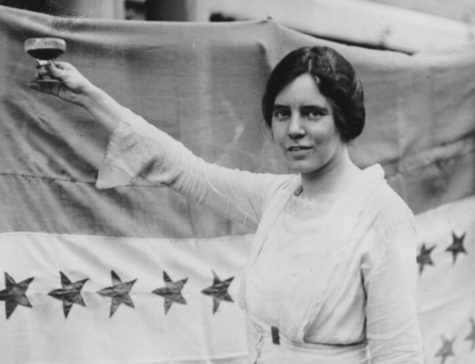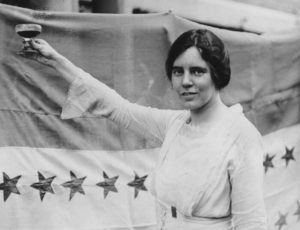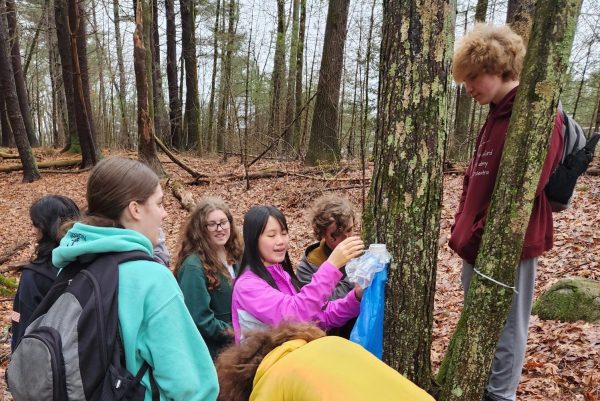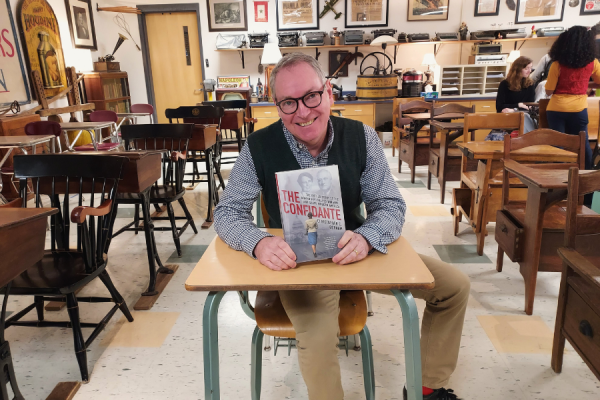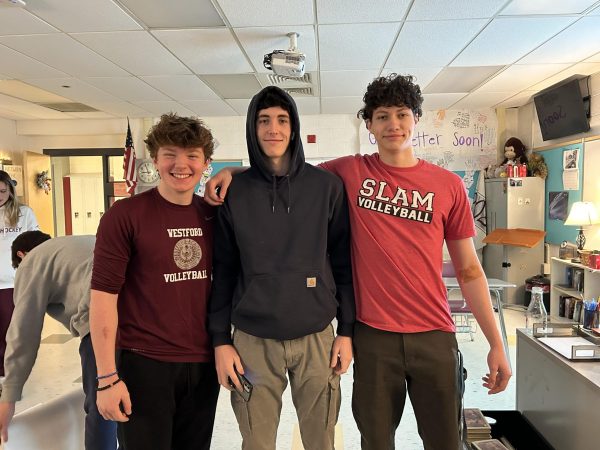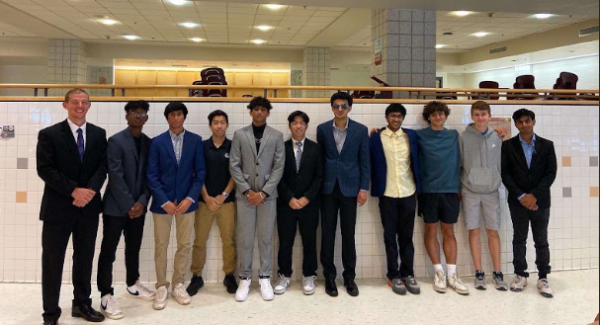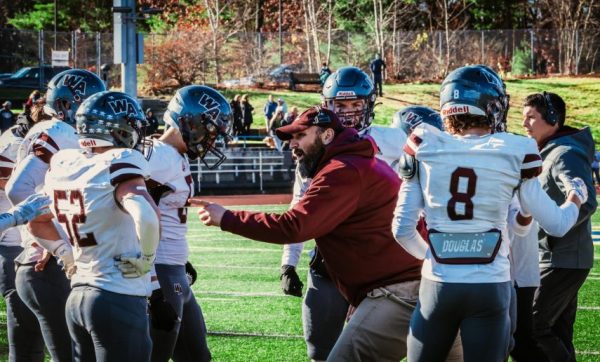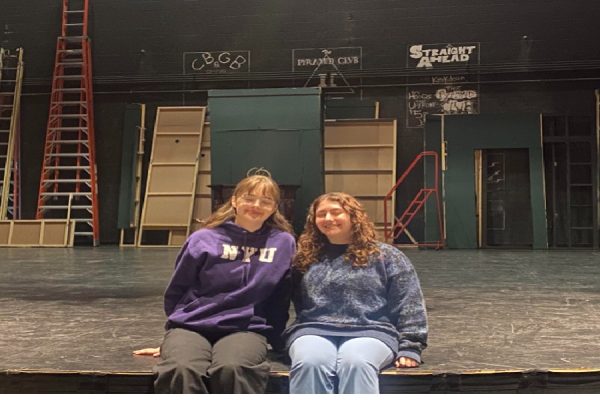Woman of the Month: Catt Campaigns for the Vote
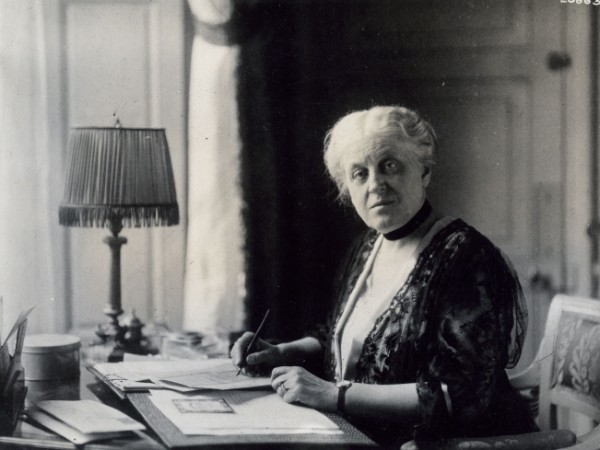
Catt sitting at her desk planning for the future.
March 1, 2020
Carrie Chapman Catt, through her political lobbying, helped acquire the enfranchisement of American women.
On January 9, 1859, in Ripon, Wisconsin, Carrie Chapman Catt was born. In 1866, the family moved to Charles City, Iowa, and when Catt was 18 she registered at Iowa State College or Ames.
The science-focused curriculum enabled Catt to become familiar with Darwin and Spencer. Her “belief in evolutionary progress through social change, served as a lifelong ‘working faith’”(Carrie Clinton Lane Chapman Catt). When she graduated in 1880, she left with a Bachelor of Science.
In 1885, she married the editor and owner of Mason City Republican Leo Chapman. When Leo contracted typhoid fever and died, Catt was unable to get to her husband in time and wound up stuck in San Francisco.
Working on a trade journal there, she witnessed the exploitation of working women and resolved to commit her life to the freeing of women.
She returned to Iowa and became the recording administrator of the Iowa Suffrage Association.
On June 10, 1890, she remarried. Catt found support for her reform push in her husband George Catt, who was a civil engineer and fellow Ames graduate.
When Catt attended a national convention in DC, serving as the reunion of the National American Woman Suffrage Association (NAWSA), she was asked to join by Susan B. Anthony, whom she had caught the attention of. Under Anthony’s guidance, Catt engaged in suffrage referenda in many states and in congressional hearings about the suffrage amendment.
Rising in power at NAWSA, Catt explored the economic, political, and social restriction placed against women’s suffrage. Additionally, she studied the flaws in the current methods employed by reformers. In 1898, she suggested a national organized commission be created to increase their attempts to stir widespread support for women’s suffrage. As chairman and director of operations, she trained and mobilized people to create new auxiliaries.
Soon, Catt’s hard work paid off. When Anthony retired in 1900, she named Catt as her successor.
Catt was president of NAWSA for four years. During that time, she endeavored to shift the organization’s emphasis from propaganda to legislative action. She encouraged education in political and organizational methods. Bolstered by the progressive movement, she garnered the support of “social justice” reformers and liberals, and women like Florence Kelley and Jane Addams.
Following George’s death in 1905, Catt focused her attention on developing New York suffrage activities and on feminism internationally.
In 1908, along with a group of suffragists, she assembled a consolidation, in the Interurban Suffrage Council, of wards and district captains known as the New York Woman Suffrage Party. Seven years later, the council “served as the nucleus of the Empire State Campaign Committee, which, led by Catt, conducted the brilliant though unsuccessful referendum campaign” (Carrie Clinton Lane Chapman Catt). But in 1917, an enhanced effort by the same council successfully enfranchised New York women.
Catt believed “that evolutionary progress in Western society had made the eventual” enfranchisement “of women inevitable”. To Catt, the international feminism efforts exerted by her were a continuation of that belief. Her efforts in 1902 to encourage a more active focus on woman suffrage amongst the members of the International Council of Women paved the way for the International Woman Suffrage Alliance to be instituted at the Berlin Congress in 1904. As president of the IWSA, along with Dr. Aletta Jacobs, a feminist from the Netherlands, Catt traveled the world. She acquired new affiliates of the organization, increasing the number from nine to thirty-two. But, when World War I broke out, it created a major obstacle for international feminism.
In December 1915, Catt gave in to the demands for her to return NAWSA. Backed by a board she personally chose, Catt constructed a plan: increase pressure on Congress to pass the amendment, pressure for individual legislatures of states to allow women the right to vote, and pressure for constitutional referenda in states. At a convention in September, Catt revealed her plan to “the board and presidents of state auxiliaries” (Carrie Clinton Lane Chapman Catt).
America’s entry into the war in 1917 signaled a partial halt of campaigning, but Catt used the country’s need for support on the homefront to her advantage. She firmly believed that by partaking in the war, women would convince the United States of their necessity. While serving on the Women’s Committee of the Council of National Defense, Catt continued to work toward enfranchisement. This decision, in addition to the part women had played in Wilson’s reelection, won them his support of the amendment.
On January 10, 1918, the House passed the federal amendment, and two years later on August 26, the nineteenth amendment was officially part of the Constitution.
Similar to her contemporary Alice Paul, Catt was successful in her quest to achieve the nineteenth amendment. With their differing, but ultimately successful tactics, the two women demonstrated the same contrast between tactics demonstrated by the women of England’s fight for enfranchisement. Similar to the suffragists, Catt hoped to prove that women were capable enough to have and worthy of the vote through calm petitioning and patience. And similar to the suffragettes, Paul broke off from the peaceful organization of NAWSA to form her own, more militant organization the NWP. While I believe both women/groups would like to believe it was their own efforts that ultimately won the battle for suffrage, it was the combined efforts of them both, in addition to the efforts of the past women, that awarded them their triumph. This joint effort of women, in general, conveys the relevant message that together, we are stronger. We need both the people who prove that we are capable and rational, and the people who push back when it is necessary. But, because I have already extolled the virtues of the person who is aggressive about what they want, I am going to focus on the person who is patient and calm. But, I encourage you to read about Paul so you are able to understand both efforts vital to the acquisition of enfranchisement for the American women.
With her focus on the political side of achieving suffrage, Catt appealed to many politicians and was more easily able to ingratiate herself into the company of powerful men. But, Catt never pretended to be a damsel in distress to placate the fragile ego of the men she encountered. She chose when to speak up and her calm approach made the points when she was more forward, all the more impactful. Catt was a dynamic woman who knew how to get what she wanted and was willing to play nice to get her foot in the door. Armed with the knowledge that a woman who spoke up was a “hysterical one”, she strove to maintain her composure, thus gaining the respect of men such as President Wilson. Catt was focused on invoking change one state at a time, establishing auxiliaries in each state, rather than going straight to the president and running the risk that the states would not approve. Through her calm approach, Catt demonstrated that when you fight for something, it is not always the conformists you should fight against, but those who attempt to force you into conformity.

